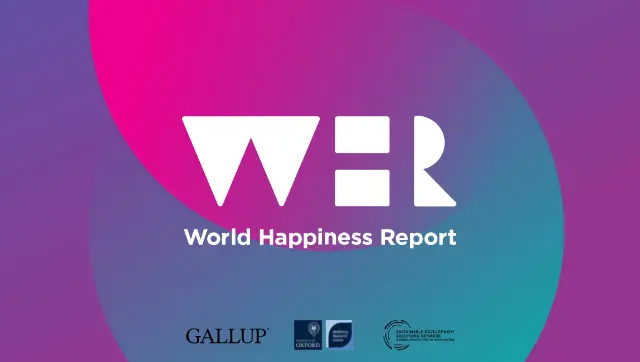The World Happiness Report 2025: Building a Connected Team (And Why It Matters to Your Bottom Line) 🚀
From Team Lunches to Trust: Simple Ways to Boost Wellbeing & Drive Growth in 2025 📈
As an expat living in Australia with a background in the tech and Salesforce ecosystem—and a keen interest in sports psychology and team dynamics—the World Happiness Report 2025 immediately resonated with me. It offers a data-driven perspective on how human connection, trust, and kindness ❤️ directly impact not just our personal lives, but also the success of our businesses.
This year’s theme of “caring and sharing” highlights a critical point: in an increasingly remote 💻 and AI-driven 🤖 world, fostering genuine human connection is more important than ever. It’s a topic I’ve been exploring in my own work, especially as we navigate the impact of technology on interaction, wellbeing, and motivation.
1. Kindness: A Strategic Advantage (It’s Not Just Fluffy!) 🤝
The report makes it clear: kindness = happiness. 🎉
Countries with high levels of trust and generosity experience less happiness inequality. This isn’t just a feel-good idea—it’s a strategic advantage for business.
In practical terms, this means consistently building trust—like the locker room before a big game, where mutual respect and support make all the difference. Leadership training that emphasises empathy and active listening, along with peer recognition programs, can foster that same sense of psychological safety.
And let’s not overlook the power of gratitude—a simple “thank you” can significantly enhance workplace culture.
2. The Power of Shared Meals (And My Team’s Recent Experience) 🍽️
Sharing meals fosters joy and connection. Research even shows it releases oxytocin—the “bonding hormone.”
Just a few months ago, my team enjoyed a meal together, thanks to a wonderful Salesforce initiative that encouraged teams to dine together as a Christmas gift. The lift in collaboration and energy afterwards was undeniable. It reminded me of the camaraderie after a rugby match—that sense of shared experience and mutual support.
In our tech-driven world, we need to intentionally create more of these moments.
💡 Try a “lunch rotation,” where teams take turns organising meals, or host “international food days” to celebrate diversity.
Takeaway:
- Shared meals strengthen team bonds.
- Diverse food experiences create more connected teams.
- Engaged employees are nourished employees.
3. Young Adults & the Connection Crisis (We Need to Do Better) 💔
The report reveals a concerning trend: 39% more young adults report feeling alone. 😢
This hits home in Australia, where isolation among younger generations is rising despite our sunny skies and “no worries” culture.
As leaders, we have a responsibility to address this.
That might mean:
- Creating mentorship programs
- Establishing employee resource groups
- Hosting social or volunteer events to create connection
It’s time to design workplaces that genuinely support belonging.
4. Australia: Generosity & the Connection Gap (Let’s Bridge It) 🇦🇺
Australia scores high on generosity—we’re quick to help strangers. But the report highlights a paradox: we sometimes struggle with trust and connection within our own communities.
For Australian businesses, this is a call to action.
We must prioritise transparent communication and ethical leadership. Companies like Atlassian, with their focus on openness and psychological safety, provide a great example to follow.
Let’s build not just teams—but tribes of trust.
5. Actionable Steps: Investing in Your People (And Your Future) 🚀
Here’s a simple framework for creating a happier, more connected workplace:
- Assess:
Use employee surveys to measure wellbeing and connection. 📊 - Implement:
Try pilot programs—mindfulness sessions, flexible work options, or peer recognition systems. 🧪 - Measure:
Track absenteeism, engagement, turnover, and productivity. 📈 - Refine:
Adjust strategies based on data and feedback. Iterate to improve. 🛠️
💰 Financial Justification: Happy Workers = Productive Workers
Research from Oxford University’s Saïd Business School (Oswald, Proto, & Sgroi, 2015) found that happy workers are 13% more productive.
Investing in employee wellbeing leads to:
- Lower turnover and healthcare costs
- Higher engagement and productivity
- Stronger business performance
Prioritising happiness is not a luxury. It’s a growth strategy.
✅ Quick Wins to Build Happier Teams in 2025
✔️ Say “thank you” more often
✔️ Schedule team lunches (not just Zooms!)
✔️ Start a peer recognition program
✔️ Check in on younger or isolated employees
✔️ Celebrate small wins together
✔️ Track connection—not just performance metrics
🌟 Final Thought: Building a Connected Future
Building a connected and engaged workplace is not merely an expense—it’s a strategic investment in your future.
As someone with a passion for team dynamics, and a deep belief in the power of human connection, I see a purpose-driven, balanced workplace as the key to long-term success.
Ready to take action?
Start with one small step—whether it’s a team lunch or a heartfelt thank-you—and see the ripple effect it creates.
🧠 A Note on the World Happiness Report
Want to know what really makes people happy? The World Happiness Report has you covered. 🌍
This annual gem—developed by Oxford University and global partners—uses a simple “ladder” question (thanks, Gallup!) to rank happiness in 140+ countries. It all started with Bhutan’s push for happiness as a development metric, and since 2012, they’ve been diving deep into the science of wellbeing, trust, and community.
Curious?
Explore it yourself at worldhappiness.report and see where your country ranks. 📈
📚 Further Reading from PaulDobinson.com:
- 🐾 Be Like the Golden Retriever (Or Better Yet, Be Like Elsie)
- 🙏 The Emotional Power of Giving Thanks in Business
- 🧠 Navigating Change Management in AI
- 💼 Purpose, Engagement, and Positive Psychology
- ⚖️ Striking Work-Life Harmony
- 👋 About Me
📖 Citation:
Oswald, A. J., Proto, E., & Sgroi, D. (2015). Happiness and productivity. Journal of Labor Economics, 33(4), 789–822.







